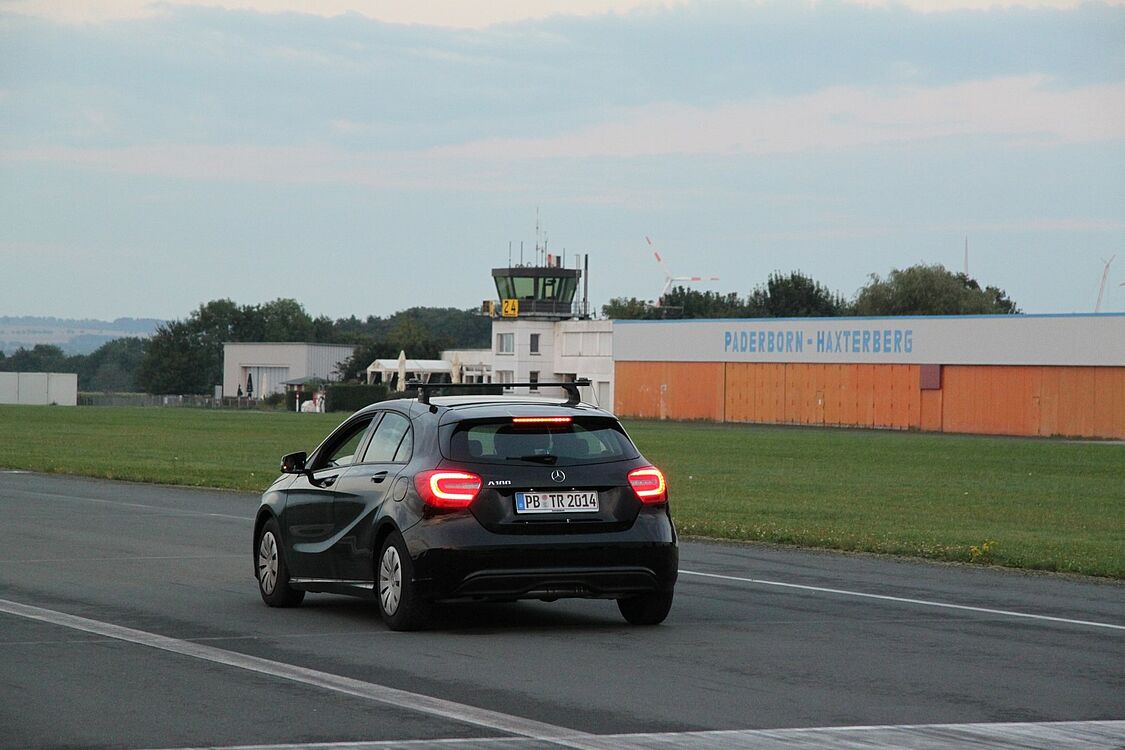Development and simulation of co-operative driver assistance systems
Advanced Driver Assistance Systems (ADAS) are finding their way into automotive series production and are indispensable in modern vehicles for reasons of both safety and comfort. At the same time, both the degree of networking and automation will increase continuously over the next few years. There is considerable research potential here, primarily in the development of ADAS that utilise autonomous driving and cooperative interaction technologies. In turn, the appropriate development tools must be provided for this.
The model- and simulation-based development of advanced driver assistance systems is ideally supported by a complete development environment for virtual prototyping. Such an environment has been created as part of the TRAFFIS project (test and training environment for advanced driver assistance systems).
We operate driving simulators to validate, test and demonstrate our results






Driving simulators and test vehicle
We have various driving simulators and a test vehicle for demonstration and testing purposes. The 4 driving simulators cover a range from simple and transportable to a high-end simulator with a sophisticated motion and projection system. The latter in particular offers the occupants a realistic driving experience and is therefore suitable not only for validating and evaluating new motion cueing procedures but also for driver training focussing on new assistance systems or dealing with complex and critical traffic situations.
The ATMOS driving simulator consists of a real vehicle cabin with all its controls, a projection cockpit and a motion system with 5 degrees of freedom. Inside the cockpit, the scenery is seamlessly displayed on a 270° circular projection that completely covers the driver's field of vision. In addition, the realistic visual experience is enhanced by the display of corresponding images in the interior and exterior mirrors, which are continuously adapted to the driver's line of vision by video tracking of the head position. The driver has the real controls such as the steering wheel and pedals in the chassis. In addition to visual information, the driver receives haptic feedback via the controls thanks to the force feedback actuator system and can read the speed from the instruments in order to assess the driving situation. The mechanical and IT coupling of the chassis is carried out via a standardised interface, so that various chassis from the smallest car to the truck cab can be mounted on the ATMOS.
The vehicle chassis is mounted on a platform inside the cockpit, the so-called shaker. This is one of two independent components of the movement system. Three crank drives allow the shaker and thus the chassis to be tilted around the longitudinal and transverse axes and moved in translation along the vertical axis. These movements are relative to the projection surface. In addition, the pulpit with the projection surface can be tilted as a whole around the longitudinal and transverse axes. The second component of the movement system is used for this purpose, in which four linear drives can move the two parts of a cross travelling gear construction in any combination in relation to each other. How the five degrees of freedom of the motion system are utilised during the simulation is controlled by motion cueing.
Depending on the application or scientific issue to be addressed, smaller simulators sometimes offer advantages over large, complex systems. For example, when transferring findings from basic research to application-orientated research and development, it is particularly important that simulators can be used flexibly, are transportable and cost-effective. For this reason, we also maintain additional simulators at the RtM that fulfil these requirements. A motion system with a small installation space is used here. There are also various options for replacing large projection screens. In addition to simple monitors, we also use "Oculus Rift" virtual reality goggles, which enable a realistic visual experience.
The validation of our models on the real system can be carried out with our own test vehicle, which is equipped with extensive measurement technology.

